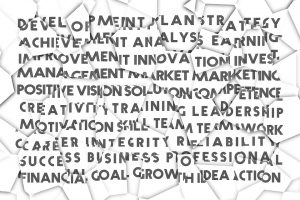The goal of Lean is to maximize customer value while minimizing waste. A Lean process has had the “waste” removed from it. This is achieved through instilling a set of principles: Continuous Improvement, Respect for People, Servant Leadership, and using a set of tools to bring the organization to an improved, more efficient state.
Lean is embraced by employees who contribute directly to the organizational tasks, and by leadership who want what is best for their staff and the business.
How Does ‘Lean East’ help Companies Become Lean?
We help enable people who directly perform the process by leading activities such as identifying the eight wastes and testing improvements that will eliminate them. People often consider ‘Lean’ a set of continuous improvement tools. However, it is also a different way of thinking and managing an organization focused on continuous improvement.
We help teach these principles and encourage an organization to adopt a culture and organizational practices that support these principles. This will lead them to their success through our project work and our training.
Lean Thinking
Lean thinking changes the focus of management from optimizing separate technologies, assets, and vertical departments to optimizing the flow of products and services across technologies and departments to ultimately return value to the customer. Eliminating waste along these horizontal value streams creates processes that need less human effort, less space, less capital, less time, and less churn. Products and services are delivered with low variability, high quality, low cost, and fast throughput times.
Typical long-term improvements from manufacturing and service industries utilizing lean concepts and tools have been quantified as:
- Cost reduction of 25% – 55%
- Quality improvement of 50% – 90%
- Productivity improvement of 45% – 75%
- Inventory reduction of 60% – 90%
- Lead times reduced by 50% – 90%
Toyota Production System
The term “Lean” was first used to describe the Toyota Production System during the late 1980s. Toyota’s underlying principles of Lean, the Toyota Way, have been outlined as:
Continuous Improvement
- Challenge: We form a long-term vision, meeting challenges with courage and creativity to realize our dreams
- Kaizen: We improve our business operations continuously, always driving for innovation and evolution
- Genchi Genbutsu: Go to the source to find the facts to make correct decisions
Respect for People
- Respect: We respect others, make every effort to understand each other, take responsibility, and do our best to build mutual trust
- Teamwork: We stimulate personal and professional growth, share the opportunities for development, and maximize individual and team performance
Servant Leadership
- Team members are the experts and key to the value stream
- Leaders enable team members: They focus energy on solving problems to enable their employees to do their work
Lean Tools
We do use Lean tools when working with clients!
Lean continuous improvement tools are a set of methods for gathering and assessing data about a business process. First, we leverage the insight that comes from the output of these tools to identify and then eliminate the waste in a process and organization.
Some of these common tools are:
| 5S | Minimizing muda, mura, and muri |
| Value Stream Mapping | Poka-Yoke (Error Proofing) |
| PDCA (Plan, Do, Check, Adjust) | Hoshin Kanri (Policy Deployment) |
| Identification of 8 Wastes | Single-Minute Exchange of Dies (SMED) |
| Continuous Flow (Push versus Pull) | Standardized Work |
| Kanban (Visual Display of Work Processes) | Takt Time |
| Root Cause Analysis | KPIs (Key Performance Indicators) |
These tools are often combined with Six Sigma tools and concepts used to gather data and reduce process variation.

Forget the buzzwords and focus on results.
We begin with the end in mind.
Lean Transformation
A Lean transformation is the realization of the benefits of implementing Lean thinking. As a result, employees are more satisfied and more involved in their work because they have ownership and agency over their deliverables, and the company realizes benefits in real return on investments.
Lean is well-known for significant improvements in manufacturing organizations but is equally suited for service industries, including healthcare, government, finance, insurance, and education.
Would you like to learn more about how Lean can help your organization today? Contact us.


